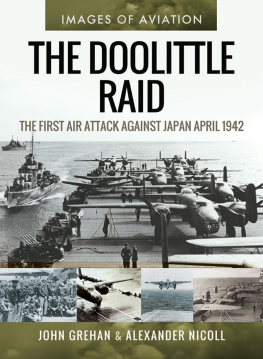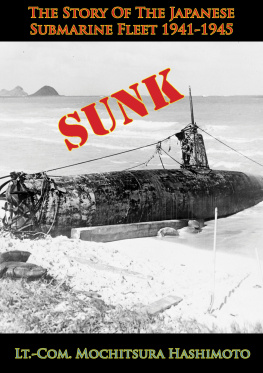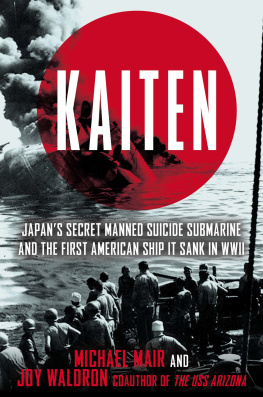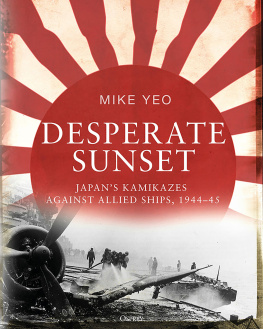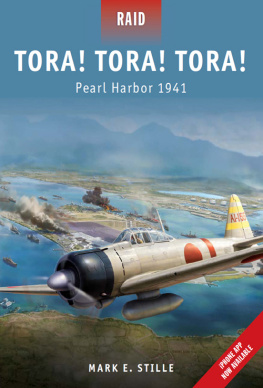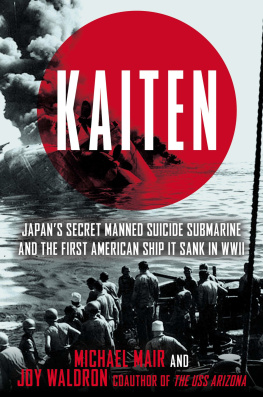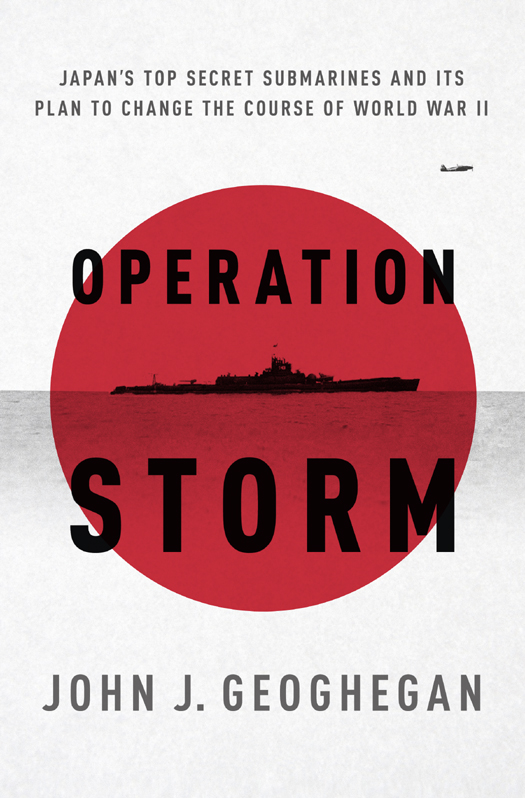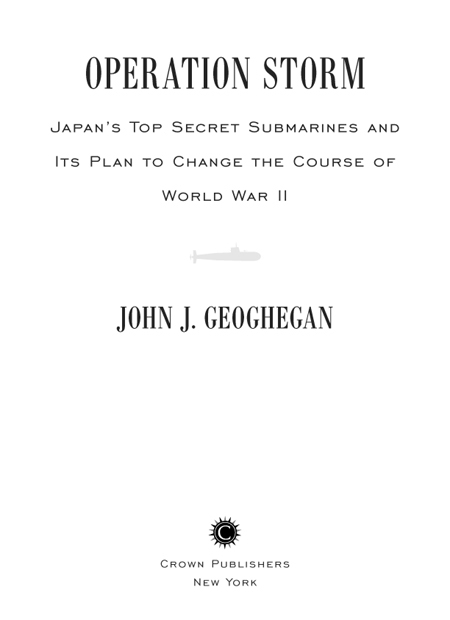Copyright 2013 by John Geoghegan
All rights reserved.
Published in the United States by Crown Publishers, an imprint of the Crown Publishing Group, a division of Random House, Inc., New York.
www.crownpublishing.com
CROWN and the Crown colophon are registered trademarks of Random House, Inc.
Library of Congress Cataloging-in-Publication Data is available on request.
eISBN: 978-0-307-46481-1
Illustrations by Emil Petrinic
Jacket design by Eric White
v3.1
For Emma and Nina,
because its always better to know
both sides
C ONTENTS
A UTHOR S N OTE
Under the supervision of the Demobilization Bureau, the basic material contained in this monograph was compiled and written in Japanese by former officers The paucity of original orders, plans and unit journals, which are normally essential in the preparation of this type of record, most of which were lost or destroyed during field operations or bombing raids rendered the task of compilation most difficult However, while many of the important orders, plans and estimates have been reconstructed from memory and therefore are not textually identical with the original, they are believed to be generally accurate and reliable.
Japanese Operational Monograph, J APANESE R ESEARCH D IVISION , M ILITARY H ISTORY S ECTION , H EADQUARTERS , A RMY F ORCES F AR E AST, 1946 , PREFACE, P. V .
R ASHOMON IS A J APANESE TERM THAT DESCRIBES HOW DIFFERENT witnesses to the same event can shape its story differently, based on individual perception. Rashomon also applies to the history of the I-400 submarines because the memories of their officers and crew sometimes differ. As the preface to the Allied monograph on Japanese military history indicates above, many Japanese records were destroyed during or immediately after the war. As a result, I have relied primarily on first-person accounts either oral or written. When accounts differ, I have indicated the differences in a footnote.
Additionally, Japanese records show an event happening a day later than U.S. records. This is because Japanese time is 13 to 16 hours ahead of U.S. time, depending on the U.S. time zone and daylight savings. For example, the attack on Pearl Harbor happened on Monday, December 8, in Japan, but the date is emblazoned in American memory as Sunday, December 7. The fact that many Japanese records were lost, or intentionally destroyed, at the end of the war means dates can be difficult to establish. When dates are in conflict or doubt, a footnote explains the difference. Any errors are my own.
Finally, Japanese names appear in Western style, with the family name coming last. In the interest of simplicity, I have also omitted any macrons. Ages are also stated in Western terms. (Prior to World War II, Japanese children were considered one year old when they were born.) And though the Japanese do not refer to ships as male or female, I have done so throughout the text to maintain consistency with Western convention.
P RINCIPAL A CTORS
IMPERIAL JAPANESE NAVY
(IJN, OR DAI-NIPPON TEIKOKU KAIGUN)
N AVAL G ENERAL S TAFF ( GUNREIBU )
Cdr. Yasuo Fujimori, staff officer submarines. He was dedicated to steering the I-400 program through a hostile bureaucracy.
Cdr. Shojiro Iura, staff officer submarines. He opposed the I-400 program, even though he wanted to bomb Oregon.
C OMBINED F LEET ( RENGO KANTAI )
Adm. Isoroku Yamamoto, commander in chief of the Combined Fleet. He dreamed up the I-400 submarines as a follow-up punch to Pearl Harbor.
Capt. Kamato Kurojima, Yamamotos chief staff officer. He helped make sure a resistant naval bureaucracy built Yamamotos underwater aircraft carriers.
S IXTH F LEET (IJN S UBMARINE F ORCE, OR Dai-roku Kantai)
Submarine Squadron 1 (SubRon 1, or Daiichi Sensuitai), sometimes called Sensuikan tokugata (Special submarine), or Sen-toku for short. In some instances the I-400 submarines were also referred to as tokugata, or special model subs.
Cdr. Tatsunosuke Ariizumi, squadron commander. The British may have called him the Butcher, but his reputation inside the Imperial Japanese Navy was just as tough.
I-401 (S QUADRON F LAGSHIP) K EY O FFICERS AND C REW
Lt. Cdr. Nobukiyo Nambu, commanding officer. The emotional instability of his superior officer forced him to make the toughest decision of his life.
Lt. Muneo Bando, chief navigator. He knew how to ingratiate himself with the enemy as much as with his boss.
Lt. Tsugio Yata, chief gunnery officer. He helped repel the enemys first attack.
I-400
Cdr. Toshio Kusaka, commanding officer. His crew respected him, even though hed massacred prisoners.
I-14
Cdr. Tsuruzo Shimizu, commanding officer. He was as lucky as he was skilled.
I-13
Cdr. Katsuo Ohashi, commanding officer. Last to be ready, his crew would pay the price.
631 ST A IR G ROUP (A SSIGNED TO S UB R ON 1)
Lt. Cdr. Tadashi Funada. One of Japans foremost test pilots, he came up with the Seirans poetic nickname.
Lt. Cdr. Masayoshi Fukunaga, executive officer. Loved by some, he was viewed as incompetent by others.
Lt. Atsushi Asamura, Seiran squadron leader, I-401. He would gladly give his life in support of the mission.
Ens. Kazuo Takahashi, Seiran pilot, I-400. He questioned whether they really had what it took to succeed.
WO (warrant flying officer) Nobuo Fujita, seaplane pilot, I-25. He was the first enemy pilot to bomb the U.S. mainland.
U.S. NAVY
C OM S UB P AC
(C OMMANDER S UBMARINE F ORCE , U.S. P ACIFIC F LEET)
Vice Adm. Charles A. Lockwood, commander, submarine force, U.S. Pacific Fleet. His subs helped bring an end to the war with Japan.
USS S EGUNDO (SS 398)
Cdr. James D. Fulp, Jr., commanding officer (May 1944June 1945). His crew trusted him like no other skipper.
Lt. Cdr. Stephen Lobdell Johnson, commanding officer (June 1945-February 1946). His seeming inexperience rattled his crew.
Lt. John E. Silent Joe Balson, executive officer. Steady under the worst of circumstances, he would lead the I-401s boarding party.
Lt. (jg) L. Rodney Johnson. When he first saw the I-401, he thought it was a ship.
Lt. (jg) Victor S. Horgan. He was ready to sink the I-401 the moment it was required.
QM3c (quartermaster third class) Carlo M. Charlie Carlucci. He wasnt sure whom to fear more, the I-401 or his trigger-happy crewmates.


